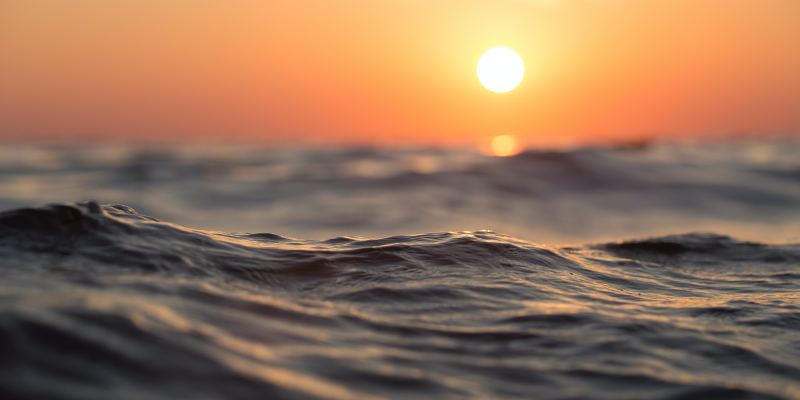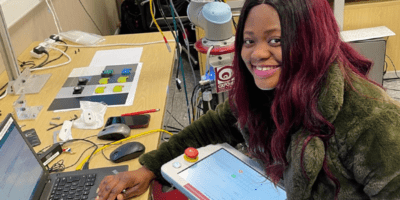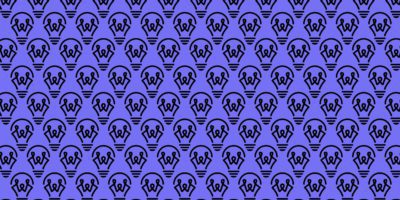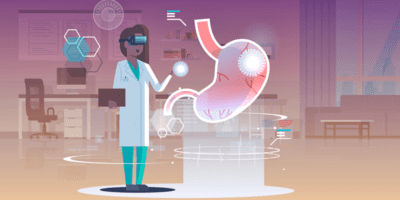Dr Simona Aracri is a researcher at the Consiglio Nazionale delle Ricerche (the National Research Council of Italy – Institute of Marine Engineering) in Genoa, Italy. Simona is trained as a marine engineer and naval architect, studying at the University of Genoa in Italy and the University of A Coruña in Spain, before moving on to the University of Trieste in Italy and the Royal Netherlands Institute for Sea Research (NIOZ). She obtained her PhD at the National Oceanography Centre in Southampton, with sponsorship from the Italian National Research Council Institute of Marine Sciences, before moving to the University of Edinburgh as a post-doctoral research associate at the Scottish Microelectronics Centre in early 2018, and then eventually returning to her native Italy.

“My path wasn’t straightforward, so to the girls out there I would only simply say be curious, read, learn, and work hard. There is really nothing intimidating about robotics, and besides, the world is changing for the better, so you will probably be lucky enough to meet many other supportive girls and colleagues along the way.”
Exploring my love of literature and languages
To explain my career to date, starting at school seems like the best place. In Italy at 14 or 15 years old you can decide to direct your studies in a specific direction, I chose languages. I was fascinated by travelling and by a particular change that happens in people’s mindsets when they speak one language instead of another. Also, I was an avid reader and I really wanted to know why a writer chose one expression instead of another, without the filter of the translation.
So, I started to study English, of course, and Russian. A new alphabet and such a new culture deeply fascinated me and after two years of intense studying, I won the gold medal at the Russian Language Olympics, an event that happened every year at the Pushkin Institute in Moscow. Then back at home the local newspaper published about this but misspelt my name, oh well…
Combining engineering, oceanography and offshore robotics

At the end of high school, I could not leave my native city, as I would have done to continue to study languages, so I decided to dive into something completely different — marine engineering and naval architecture. It was not easy to move from literature and languages to engineering, I was one of the 20 girls among 100 boys in the course, one of the two with a background other than scientific. Less than half made it to the end and many fewer girls, only me with a different background. Engineering made me embrace a new ‘forma mentis’ (mindset), but I wasn’t convinced about being an engineer my whole life.
During university, I had the chance to live in Spain for a year and at the end of my master’s degree, I flew to NIOZ, Royal Netherlands Institute for Sea Research, in the Netherlands to write my master’s thesis. At NIOZ, I experienced a research environment for the first time and I started to think about oceanography. Once I got my degree and chartered status, I was offered a research fellow job in Venice at CNR-ISMAR (the National Research Council of Italy – Institute of Marine Sciences).
My managers at the time encouraged me to spend the time that I had on my contract working on a PhD, other than taking care of data collection and field oceanographic campaigns. So, I did. I got my PhD a few years later at NOCS (the National Oceanography Centre, Southampton) in physical oceanography. The doctorate years were a life-changing experience, I spent more than six months at sea, met an enormous amount of people from all over the world, travelled almost constantly and more importantly, I learnt, studied and learnt some more.
By the end of the PhD, I was not ready to stop yet so I moved to Edinburgh and did a postdoc at the University of Edinburgh in offshore robotics (ORCA HUB). It seemed a waste to me not to use the engineering knowledge, offshore robotics was a good chance to combine engineering and oceanography. In Scotland a came across soft robotics and its fantastic community. I started to wonder about the unveiled potential of soft robotics for oceanographic purposes.
For the first time, a year and a half ago, I got my first permanent position back at CNR, but this time, after 13 years away, in my home city of Genoa.
The impact of COVID was to knock out the routine for many of us, for me it gave me a nudge towards coming back to Italy and to Genoa after so many years. In 2020 I accepted a new permanent job in Italy and moved country, house, office for the nth time. I’m ready for a new-old adventure.
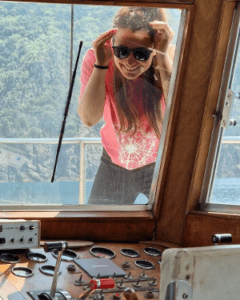
The group takes part in expeditions in the Arctic (RELOAD) and Antarctic (RESTORE), as well as in the Mediterranean, and we are involved in technology transfer as well as with the local communities for outreaching too. The technology that comes out of the lab is unique and unprecedented, and so are the data gathered from it.
Research role on a day-to-day basis
It is hard to pin down a routine in this job, at least for me. In my mind this is how it works, there are three main spheres:
- Writing/reading (papers or proposals);
- Lab/fieldwork;
- Development (workshops, seminars, conferences, meetings, outreach).
Each sphere is divided into two portions, with one portion dedicated to the scientific path I wish to pursue, and the other portion dedicated to the group, e.g. working towards a deadline together, contributing to an idea or a project, and so on.
The two portions are often connected and some days there is no space for both. So, if you take that and mix it up, this is how my day might work out tomorrow.
For example, now I am working on the sensor integration on a robot called SWAMP (Shallow Water Autonomous Multipurpose Platform), for a demo in the Venetian Lagoon (Innovamare) happening very soon. I am also taking care of the data policy for our marine robots with relative paper and working on two oceanographic papers focused on the physics of the Mediterranean Sea.
Meanwhile, I am working on two project proposals, one on novel technology for habitat restoration and the other one for a new observational platform.
Using innovative technology such as ‘soft’ robots to better understand ocean processes in order to tackle climate change
The paper about using innovative technology, in particular soft robotics, to improve our ocean understanding, came out with the perfect timing for us now to think about it as the conclusive work of the Scottish chapter.
In Edinburgh, in one sense, I was the only oceanographer, among many roboticists, this combination made us realise that innovative platforms, such as those made entirely or partially of soft materials have the potential to gather unprecedented data, with a minimal environmental and economic cost.
Our paper focused on the two ends of the water column: the surface, which is wave dominated, and the abyss characterised often by unknown bathymetry and high pressures. Recent advances in autonomy, control, robustness and dexterity of soft robots suggest that they can be good candidates to support the global observational effort as well as the safe industrial remote management, in the two extremes of the water column. Nevertheless, the paper warns about the importance of bearing in mind the potential environmental cost that fast manufacturing, low-cost robots can constitute when introduced in the harshest and most remote natural environments on the planet.
For this reason, we published a second paper on the characterisation of highly biodegradable elastomers, and biocomposites, published at the end of 2021.
Dreaming about the potential for marvellous, unprecedented data…
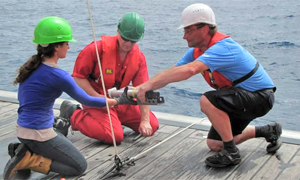
The potential of soft robots is enormous but, sticking to the scientific path that I mentioned above (the three spheres…), I believe that soft devices can complement the hard existing observational platforms. The dream would be to one day have an autonomous, entirely biodegradable robot capable of leaving behind nothing but marvellous, unprecedented data. Robots can improve human lives and, as far as Earth sciences are concerned, our understanding of the world’s oceans.
It is difficult and tricky for me to point out the ethical implications of robotics more generally, though. My very personal view is that it is vital to use robots to make humans’ life better and to allow people to work away from dangerous environments. More importantly, robots can also revolutionise the way we ‘do’ science.
Advice to girls and women who are interested in getting into robotics
My path wasn’t straightforward, so to the girls out there I would only simply say be curious, read, learn, and work hard. There is really nothing intimidating about robotics, and besides, the world is changing for the better, so you will probably be lucky enough to meet many other supportive girls and colleagues along the way.
Coming up
I am looking forward to the next Breaking The Surface (BTS) conference where we are giving an invited lecture about data policy in marine robotics, but I won’t spoil it for you, you’ll have to come and listen for yourself!
I am also working on an initiative that stemmed from a European Project, BlueRoSES, which focused on the gender gap in marine robotics: Women in Blue. The initiative is based on three pillars: data collection; sharing of experiences; and, stimulating discussion in the community. This qualitative and quantitative investigation, possible through the data collected, can help us to understand the motivations behind the gender gap and to identify the action points to reduce it in marine robotics. I’m looking forward to learning more about this.
Genoa image credit: By patano, CC BY-SA 3.0, https://commons.wikimedia.org/w/index.php?curid=57752375

